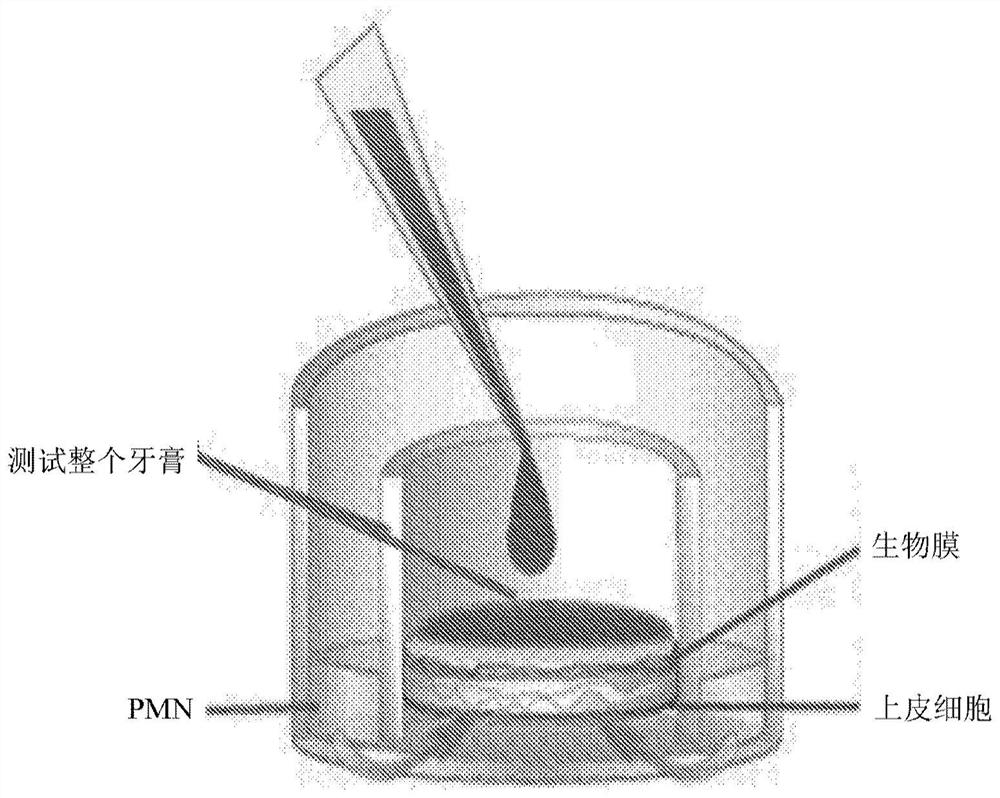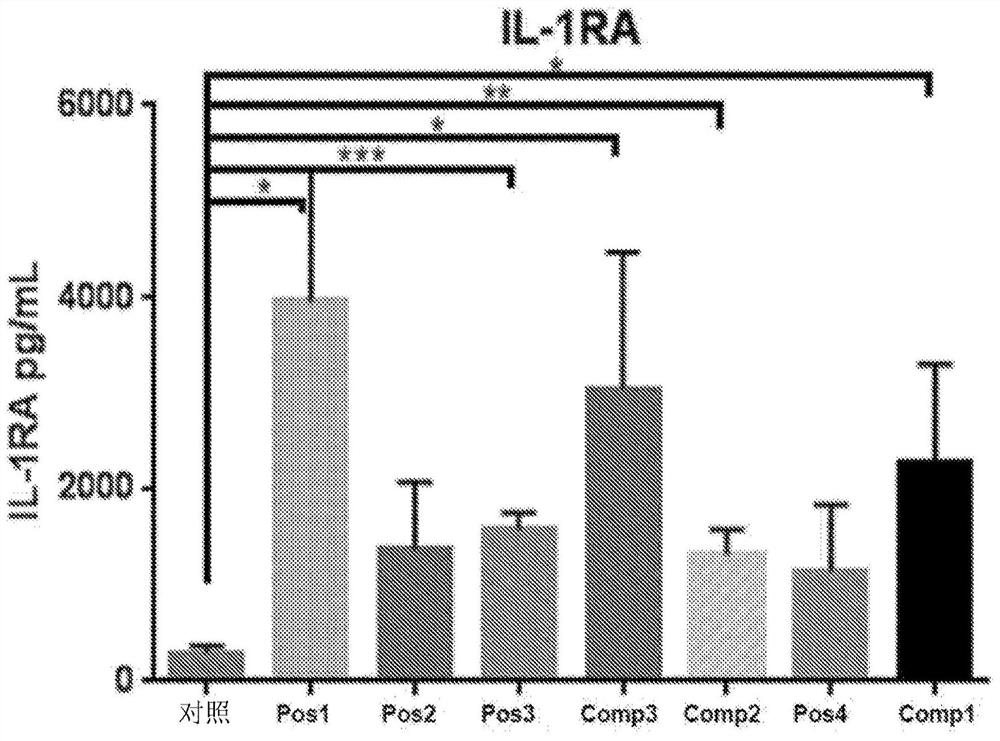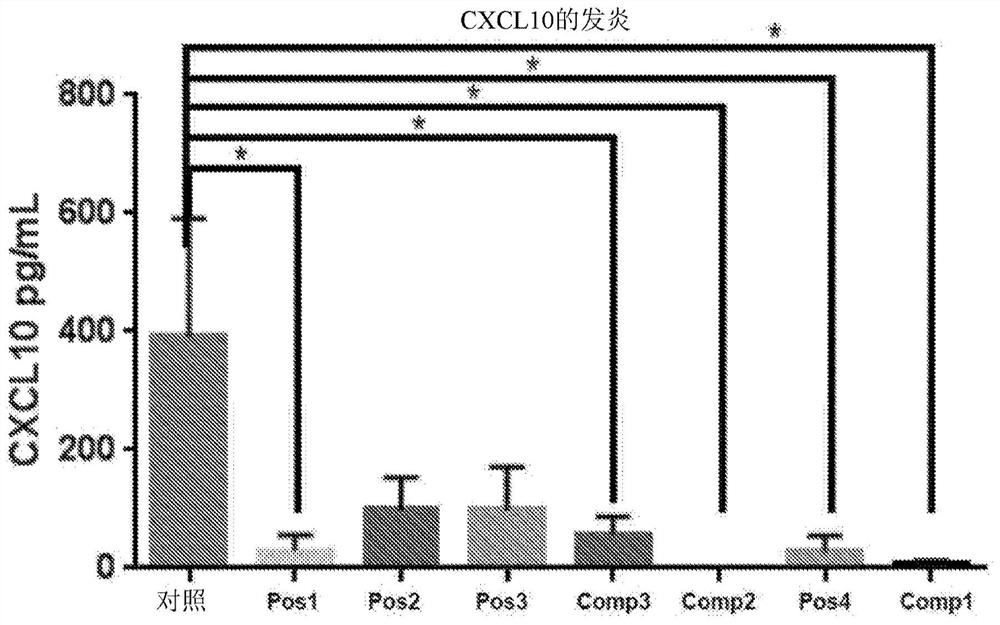Oral health model for high throughput screen and characterization of oral hygiene products
A model, oral technology, applied in the field of oral health models for high-throughput screening and characterization of oral hygiene products, capable of solving problems such as destruction of the bones and tissues that support teeth
- Summary
- Abstract
- Description
- Claims
- Application Information
AI Technical Summary
Problems solved by technology
Method used
Image
Examples
preparation example Construction
[0026] The preparation of each component of the GCM is coordinated such that each component of the GCM is ready for testing at the same time. Epithelial tissue must be obtained, HL60 cells must be induced with retinoic acid to differentiate into a neutrophil-like phenotype (PMN), and biofilms must be prepared. The preparation of PMNs and biofilms was coordinated such that PMNs and biofilms were ready after receipt from the supplier and overnight incubation of the MatTek tissue. After delivery, MatTek tissues (epithelial cells) were placed in fresh medium in 6-well plates and allowed to recover overnight in an incubator. GCMs were then assembled using cells and biofilms induced into a neutrophil-like phenotype (PMN).
[0027] GCM can be used to test various test compositions, such as mouthwash or toothpaste. When testing toothpaste (TP) in GCM, the product is prepared as a slurry. Immediately prior to the test, use ultrapure H at a 1:2 dilution 2 O dilutes the TP product. ...
example 1
[0043] GCM was used to evaluate toothpaste compositions, including Composition 1 (Comp1), Composition 2 (Comp2) and Composition 3 (Comp3). Composition 1 comprises zinc oxide, zinc citrate and stannous fluoride. Zinc oxide is present in the composition at about 1%. Zinc citrate is present in the composition at about 0.5%. Stannous fluoride is present in the composition at about 0.5%. Composition 2 comprises zinc oxide, zinc citrate, stannous fluoride and arginine. Zinc oxide is present in the composition at about 1%. Zinc citrate is present in the composition at about 0.5%. Stannous fluoride is present in the composition at about 0.5%. Arginine is present in the composition at about 1.5%. Composition 3 comprises zinc oxide, zinc citrate, stannous fluoride and zingerone. Zinc oxide is present in the composition at about 1%. Zinc citrate is present in the composition at about 0.5%. Stannous fluoride is present in the composition at about 0.5%. Zingerone is present in th...
example 2
[0048] GCM was used to evaluate a toothpaste composition comprising zinc oxide, zinc citrate and arginine, Composition 4 (Comp4). Zinc oxide is present in the composition at about 1%. Zinc citrate is present in the composition at about 0.5%. Arginine is present in the composition at about 1.5%. The data from the evaluation is in Figure 8 and shown in Table 1.
[0049] GCM was used to see the effect on the bacterial community. Specifically, experiments were performed to evaluate how treatment of toothpaste compositions including Composition 4 affected the microbiome. Two different biofilms were obtained, one from a healthy person and one from a healthy person with gum disease. Figure 8 A comparison of the composition of the two biofilms is shown. Biofilm "A" represents a biofilm from a healthy person with gum disease. Biofilm "B" indicates a biofilm from a healthy person who did not suffer from gum disease. Dashed boxes correspond to the percentages of different patho...
PUM
 Login to View More
Login to View More Abstract
Description
Claims
Application Information
 Login to View More
Login to View More - R&D
- Intellectual Property
- Life Sciences
- Materials
- Tech Scout
- Unparalleled Data Quality
- Higher Quality Content
- 60% Fewer Hallucinations
Browse by: Latest US Patents, China's latest patents, Technical Efficacy Thesaurus, Application Domain, Technology Topic, Popular Technical Reports.
© 2025 PatSnap. All rights reserved.Legal|Privacy policy|Modern Slavery Act Transparency Statement|Sitemap|About US| Contact US: help@patsnap.com



